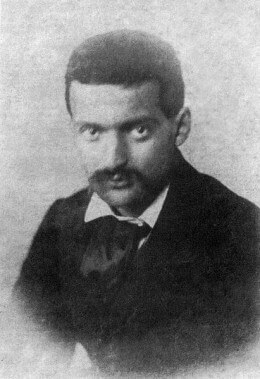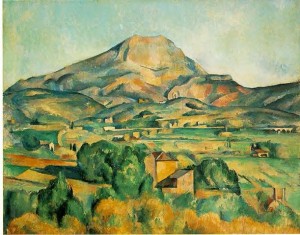
1. His Dad Was Rich
Growing up in Aix-en-Provence, Paul Cézanne was born to a wealthy family. His father was a banker, and a very well respected individual in the town, therefore Cézanne never had to worry about funding for his projects or lessons. Cézanne use this opportunity to attend the College Bourbon, where he met some good friends. Even though Paul’s father wanted him to be a lawyer, there was nothing about being a lawyer that he liked, so he left and headed to France.
2. His Best Friend Was Also His Idol
One of Cézanne’s best friends, Pissarro, whom he met at College Bourbon, also ended up being his greatest teacher, idol and mentor. He was very much influenced having worked closely beside him for such a long period. As a result, some of Cezanne’s first paintings were not well received by the artistic community, and even more to the point, the other painters did not like his art either. That would not dissuade Cézanne from participating further, and he continued to evolve his painting style.
3. He’s Heavy Handed
In the early years of his painting career, Cézanne was clearly a heavy-handed painter, using deep brush strokes and layering paint on the canvas thick. After he began painting outdoor instead of recreating things indoors, he started to show that he had the ability to create a more structured painting, with clear distinctions between colors and a steady brushstroke.
4. He’s Kind Of Dark
Something that other artists have always chided Cézanne for is the fact that he painted his works in palettes of colors that were generally darker than those of his fellow painters were. While others were using the bright yellows, green, and reds that are often seen dabbled on the canvas of impressionistic art, Cézanne stuck to a dark or neutral pallet, displaying the dark sultry blues, crimsons, and mustard yellows.
5. He Married a Model
Just as many today dream of marrying someone famous, Cézanne, already famous in his own right, decided to settle down with his partner of 17 years, with whom he had a son. Marie Hortense Fiquet was a popular model at the time, lending more influence to his already well-regarded status as a post-impressionist painter. While Cézanne did paint his share of nude portraits, the truth is that he made them up from his imagination, because he was not able to find any models that would pose for him.
6. He Was Sick
While most people remember Cézanne for his famous paintings, like the Apples and Orange’s still life, what many may not know is that he was sick. Cézanne was a diabetic and suffered from serious depression throughout most of his adult years. Paul Cézanne passed away in 1906 from Pneumonia. He was 67 years old.
7. The Odd Man Out
Cézanne was a very shy person. In fact, he was so shy that none of his art was on public display for almost 20 years after it had been created. He was introverted and somewhat depressive. Cézanne was also different because he chose not to work with the same color palette as the other Impressionists and as a result, the other painters never inundated him with the title of Impressionist. That suited Cézanne just fine it seems, since he only did two shows with the Impressionist group before deciding that he would leave due to artistic differences.
8. His Flowers Are All Fake
When you look at a Cézanne painting and you see the gorgeous colors, remember that to start with, Cézanne never painted flower plants, mostly trees and outdoor scenery. In order to paint smaller flowers and plants, Cézanne insisted that they were fake. Since Cézanne often painted a portrait only to go back and paint over it again, the layers of paint over time would build on one another, creating a unique effect. The only way that Cézanne could keep painting something repeatedly, is if it was fake, hence the fake flowers. There are only three still life paintings of currently available for viewing that were painted using live flowers.
9. Cézanne Doesn’t Do “Sketches”
One of the most amazing things about Paul Cezanne’s paintings is that he never drew them before painting them. While other artists were sure to scratch out at least a rough outline of the objects, Cézanne was able to create paintings from nothing. Having the ability to focus solely on his work, thanks to his wealthy family, he was able to practice and continue developing his own technique. Eventually he would earn his place as one of the influential artists, leaving his mark on 20th century art.
10. He Died Doing What He Loved
Cezanne’s life was cut short by fate. Initially during his painting career, he was secluded and chose to remain indoors in order to paint his still life portraits. At the urging of his friends, Pissaro, Monet, and Renoir, he eventually began to remove himself from the shell he had surrounded himself with. He began painting outside and submitting works for public view. Even though there were mixed reactions at the time, his friends continued to assure him that he was on the path to greatness. One evening, while painting outside during a thunderstorm, Cézanne was overwhelmed and collapsed. A week later, he would die of Pneumonia. Cezanne, said to be the tie between the impressionistic style and cubist paintings, led the artists of the 20th century into a new age.

Paul Cézanne (1839–1906)

Leave a Reply